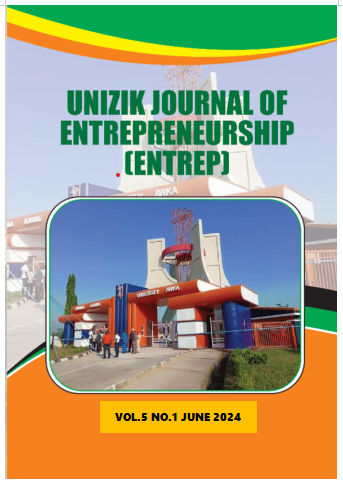ISSUES IN EXCHANGE RATE VARIATIONS AND BALANCE OF PAYMENTS IN NIGERIA
Keywords:
Balance of payments, Exchange Rate, Exchange Rate Variations, Currency, Long and short-run relationship.Abstract
This study examined the relationship between exchange rate variations on the balance of payments in Nigeria from 1980 to 2020. The study made use of Granger causality and ordinary least square. Data for the study were secondarily sourced, and the results showed that exchange rate movement has not significantly contributed on balance of payments under the years of the study. Although, the ganger result conforms with the Marshell-Linear short and long run prepositions that exchange rate devaluation enhances balance of payments, however, the OLS regression analysis in the long-run, exchange rate on semi-log functional form and exchange rate variation did not record significant effect on balance of payments. The lagged of exchange rate recorded a positive and significant influence on the balance of payments. From the result, the study recommended that efforts should be made by the authorities to provide enabling environment for production of goods and services in order to take advantage of steady devaluation of Nigeria's currency, and when this is done, Nigeria's balance of payment would improve. Consequently, Nigeria's export promotion policies should be fully implemented, as this is believed, would improve the country's gross domestic product.Downloads
References
Agu, C. (2002). Real exchange Rate distortions and external balance position of Nigeria: Issues
of Policy Options. African Institute of Applied Economics.
Bahattarai, R., & Armah, V. (2005). Exchange rate misalignment concepts and measurements for
developing countries. World Bank Publication.
Bakare & Olubokun (2011). Exchange rate variations and external trade in Nigeria. OECD
Development Center Paper, Paris.
Edwards, S. (2021). Exchange rate misalignment developing countries.World Bank.
Enag, L. (2011). Exchange rate, competitiveness and balance of payments performance. Staff
Studies, 35(1), 63-91.
Kandil, M. (2006). Exchange rate fluctuations and the macroeconomics channels of interaction in
developing and developed countries. Eastern Economic Journal of Economics 18(5), 161-
Nuben, P. A., & Noun, A. P. (2013). Can devaluation be effective in improving the balance of
payments in Nigeria? Journal of Policy Modeling, 28(6), 467-476.
Okalibe (2014). Real exchange rate misalignment and balance of trade in Nigeria. International
Review of Economics and Finance. 19, 119-144.
Okosodo, S., & Imosili, O. (2012). The determinants of real exchange rate in Nigeria. The African
Economics Research Consortium.
Oladipupo, U. (2011). The importance of exchange rate regime in limiting misalignment. World
Development, 37(10), 1612-1622.
Oriavwote, U., & Oyovwi, W. (2012). Exchange rate fluctuation and balance of payments. Journal
of Economics and Development, 24(1) 151-174.
Oyinlola, M. A. (2010). Responsiveness of trade flows to changes in exchange rate and relative
prices: Evidence from Nigeria. International Journal of Economic Science and Applied
Research, 3(2), 123-141.
Terra, R., Banco, O., & Basil, B. (2013). An indicator of effective exchange rate. IMF Staff Papers,
(1), 453-87.
Umoru, D., & Odjegba, P.O. (2013). Exchange rate misalignment and balance of payments
adjustment in Nigeria. European Scientific Journal, 9(13), 1857-7881.
Usman, B. (2007). Real exchange rate misalignment and macroeconomic performance in Nigeria: A
bilateral real exchange rate in foreign currency approach. Available at www.academia.edu

